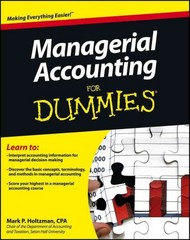- Assuming that Havel uses a parent company perspective in making foreign capital investment decisions, do you recommend that the company make the investment? Why or why not?
- Havel learns that if they decide not to invest in China, a German company will likely make a similar investment. The German investment would be protected by the Chinese government against imports by other foreign robot manufacturers. How does this information affect your analysis and recommendation?
4. Havel Robotics Company (a U.S.-based firm) exports 25,000 industrial robots per year to China under an agreement that covers a 5-year period. In China, the robots are sold The $8 transfer price per unit for components sold by Havel to its Chinese subsidiary for the RMB (Chinese currency) equivalent of $50 per unit. The total costs in the United consists of $4 of direct costs incurred in the United States and $4 of pretax profit to States are direct manufacturing costs and shipping costs, which amount to $35 per unit. The market for industrial robots in China is stable, and Havel holds the major portion of Havel. There are no other operating costs in either China or the United States. The corporate income tax rates in China and the United States are 25 percent and the market. In 2020, the Chinese government, adopting a policy of replacing imported robots 21 percent, respectively. with local products, invited Havel to open an assembly plant in China. If Havel makes Havel uses a 15 percent discount rate to evaluate all its investment projects. the investment, it will operate the plant for five years and then sell the building and The present value factor for a single payment in five periods at 15 percent is 0.497. The equipment to Chinese investors at net book value (cost less accumulated depreciation) present value factor for an annuity of payments for five periods at 15 percent is 3.352. at the time of sale plus the current amount of any working capital. Havel will be allowed Assume the investment is made at the end of 2020, and all operating cash flows to repatriate 100 percent of cash flow from operations (net income plus depreciation) to occur at the end of 2021 through 2025. The RMB/U.S. dollar exchange rate is expected the United States each year. to remain constant over the 5-year period. Havel's anticipated outlay in 2020 would be $1,500,000 (buildings and equipment, Required: $750,000, and working capital, $750,000). Buildings and equipment will be depreciated over five years on a straight-line basis (no salvage value). At the end of the fifth year, a. Assuming that Havel uses a parent company perspective in making foreign capital the $750,000 of working capital may be repatriated to the United States. investment decisions, do you recommend that the company make the investment? Locally assembled robots will be sold for the RMB equivalent of $50 each. Operating b. Havel learns that if it decides not to invest in China, a German company will prob- expenses per robot are as follows: ably make an investment similar to that being considered by Havel. The German investment would be protected by the Chinese government against imports by other Materials purchased in China (dollar equivalent of RMB cost) Components imported from U.S. parent $15 foreign robot manufacturers. How does this information affect your analysis and recommendation? Variable costs per unit $23







